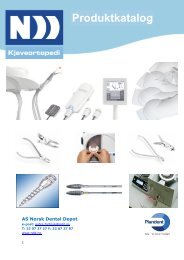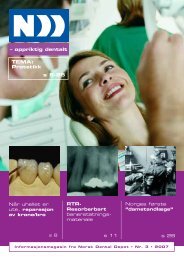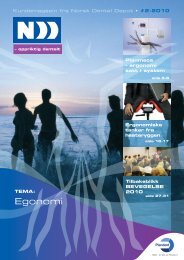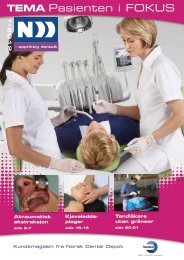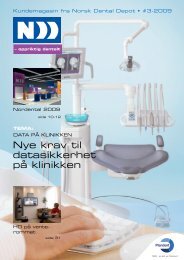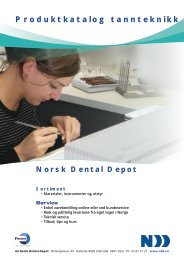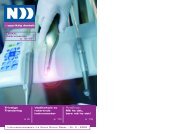Biodentine
Biodentine
Biodentine
Create successful ePaper yourself
Turn your PDF publications into a flip-book with our unique Google optimized e-Paper software.
14<br />
❸<br />
The quality and durability of the interface is a key factor for the survival of a restoration<br />
material in clinical conditions: the marginal adaptation and the intimate contact with the<br />
surrounding materials (dentine, enamel, composites and other dental materials) are<br />
determinative features. This was investigated by erosion in acid solutions, electron<br />
microscopy and microleakage tests.<br />
In the case of <strong>Biodentine</strong>, the dissolution/precipitation process, which is inherent to<br />
the setting principle of Calcium silicate cements, will differentiate its interfacial behaviour<br />
from the already known dental materials (composites, adhesives, glass ionomers).<br />
3.1 - Resistance to acid<br />
Concerning durability of water based cements, in the oral cavity; one of relevant<br />
characteristics of the dental materials is the resistance to acidic environment. It is known<br />
that glass ionomers have a tendency to erode under such conditions.<br />
The acid erosion and the effects of aging in artificial saliva on the <strong>Biodentine</strong> structure<br />
and composition were investigated (Laurent et al., 2008).<br />
Methods:<br />
The acid erosion test was evaluated daily in lactic acid (0.02M) and sodium lactate (0.1M)<br />
aqueous solution (pH 2.74), by measuring the height loss of the <strong>Biodentine</strong> samples<br />
(2mm, diameter 30mm) for a week. Aging was evaluated in Meyer-modified Fusayama<br />
artificial saliva containing phosphates (pH 5.3).<br />
The height modification of the material was evaluated for a week. Scanning electron<br />
microscopy was used to examine and characterise the surface of the sample before and<br />
after Aging. The possible dissolution of the new material in the artificial saliva was<br />
evaluated by measuring the concentration of Si, Ca, Zr, and inorganic carbonate in the<br />
artificial saliva after 1, 2, 3 and 4 weeks.<br />
Results :<br />
<strong>Biodentine</strong> Interfaces<br />
In the 2.74 pH solution, acid erosion is observed (Fig.4), but this erosion is slower than<br />
with glass ionomer cement reported by Nomoto (Nomoto and McCabe, 2001).



